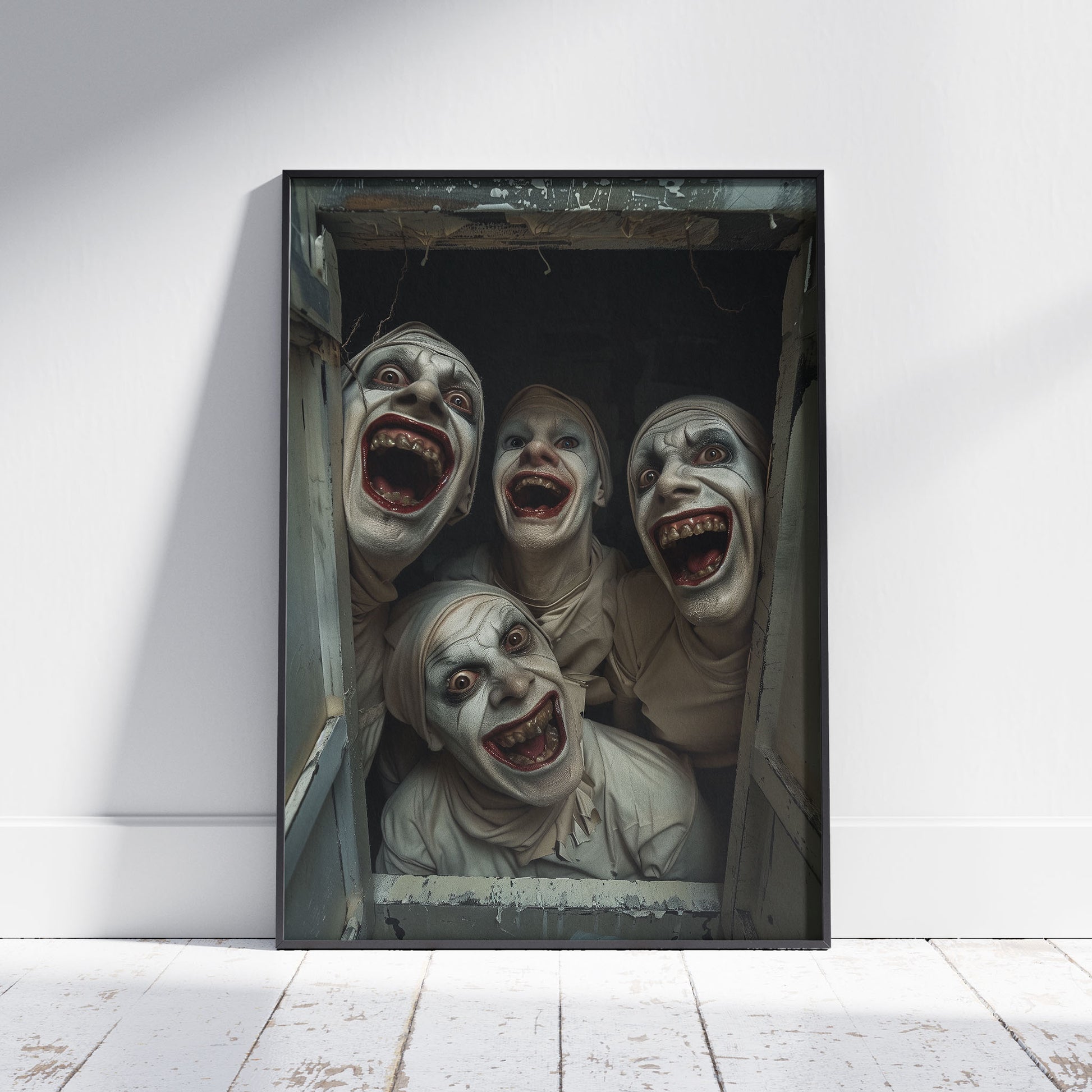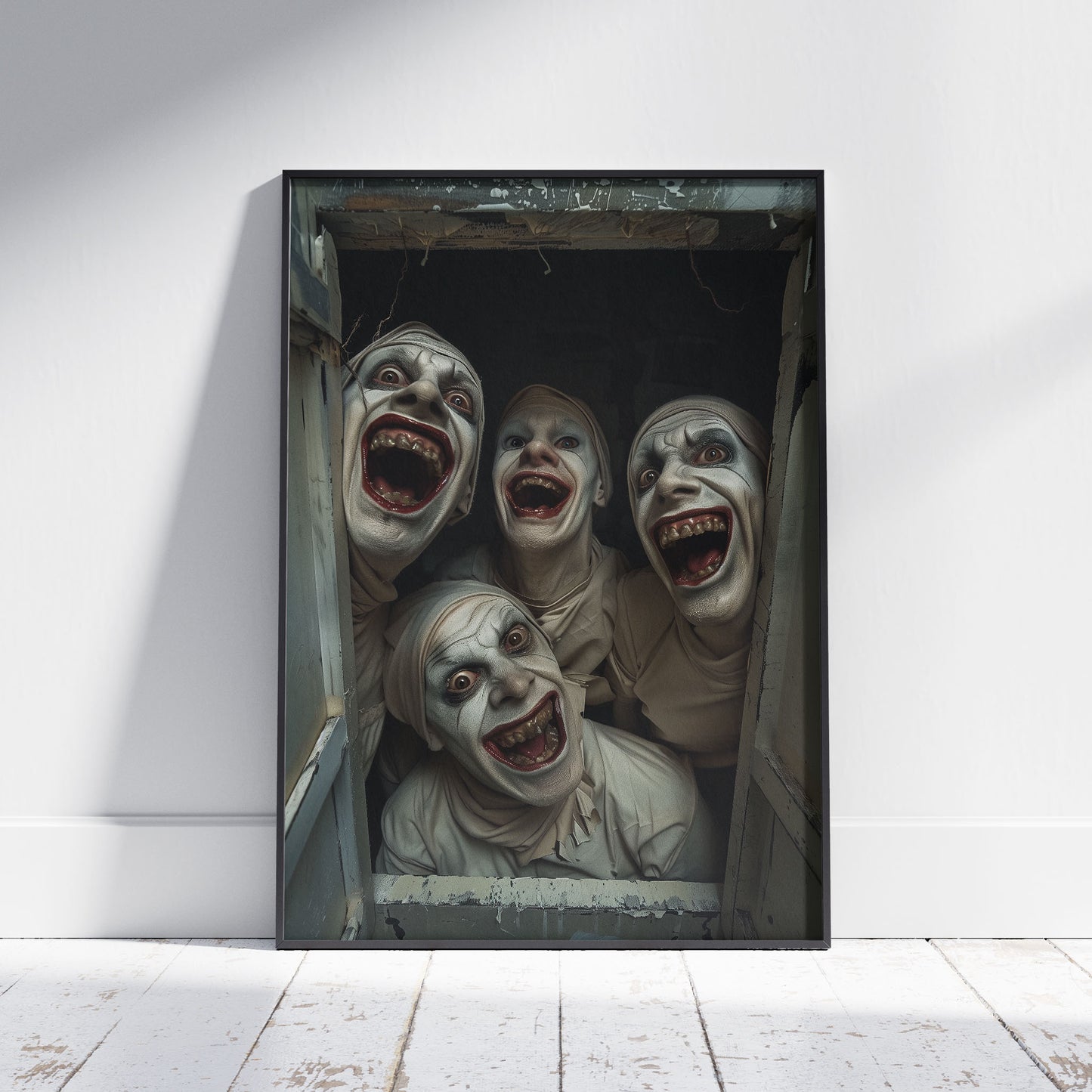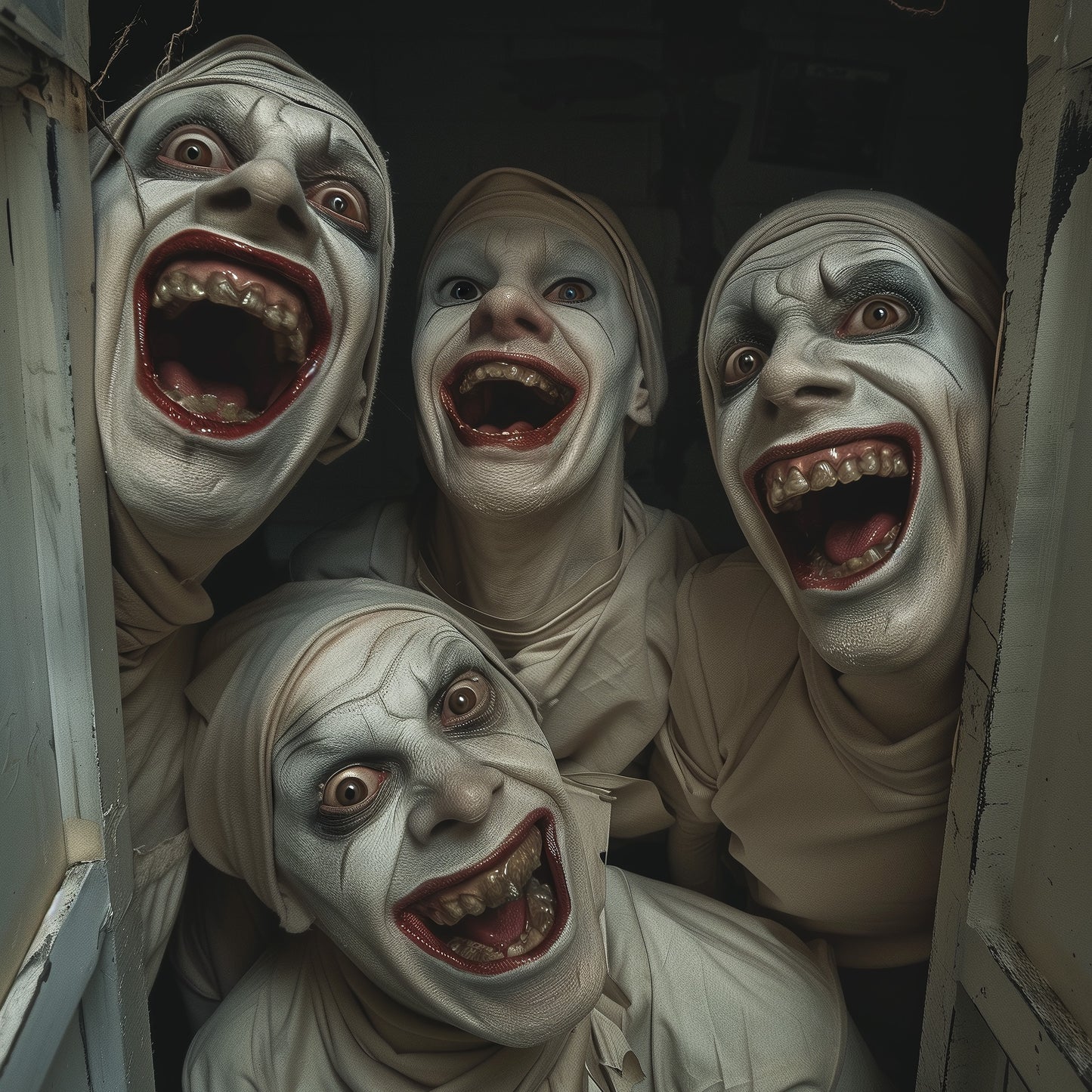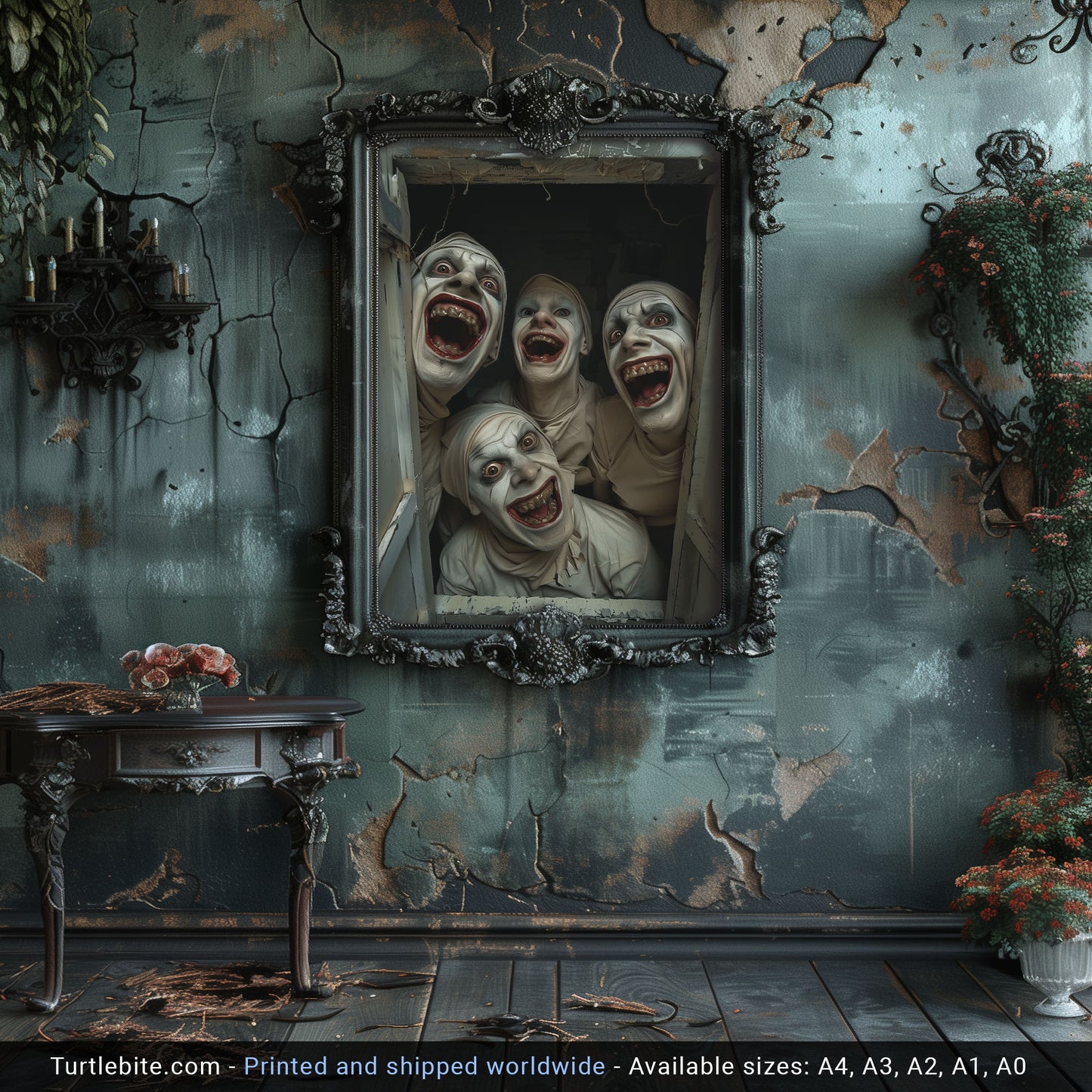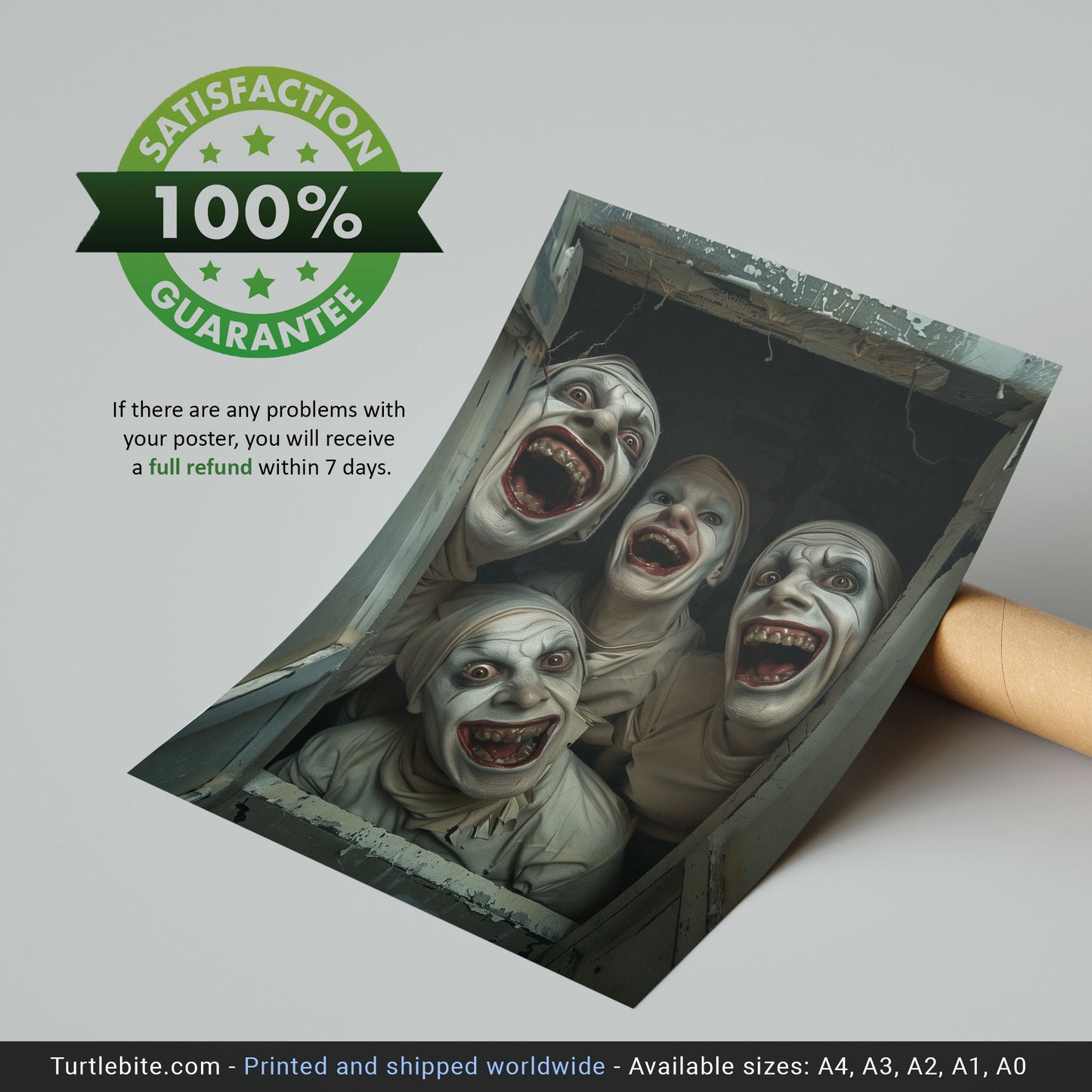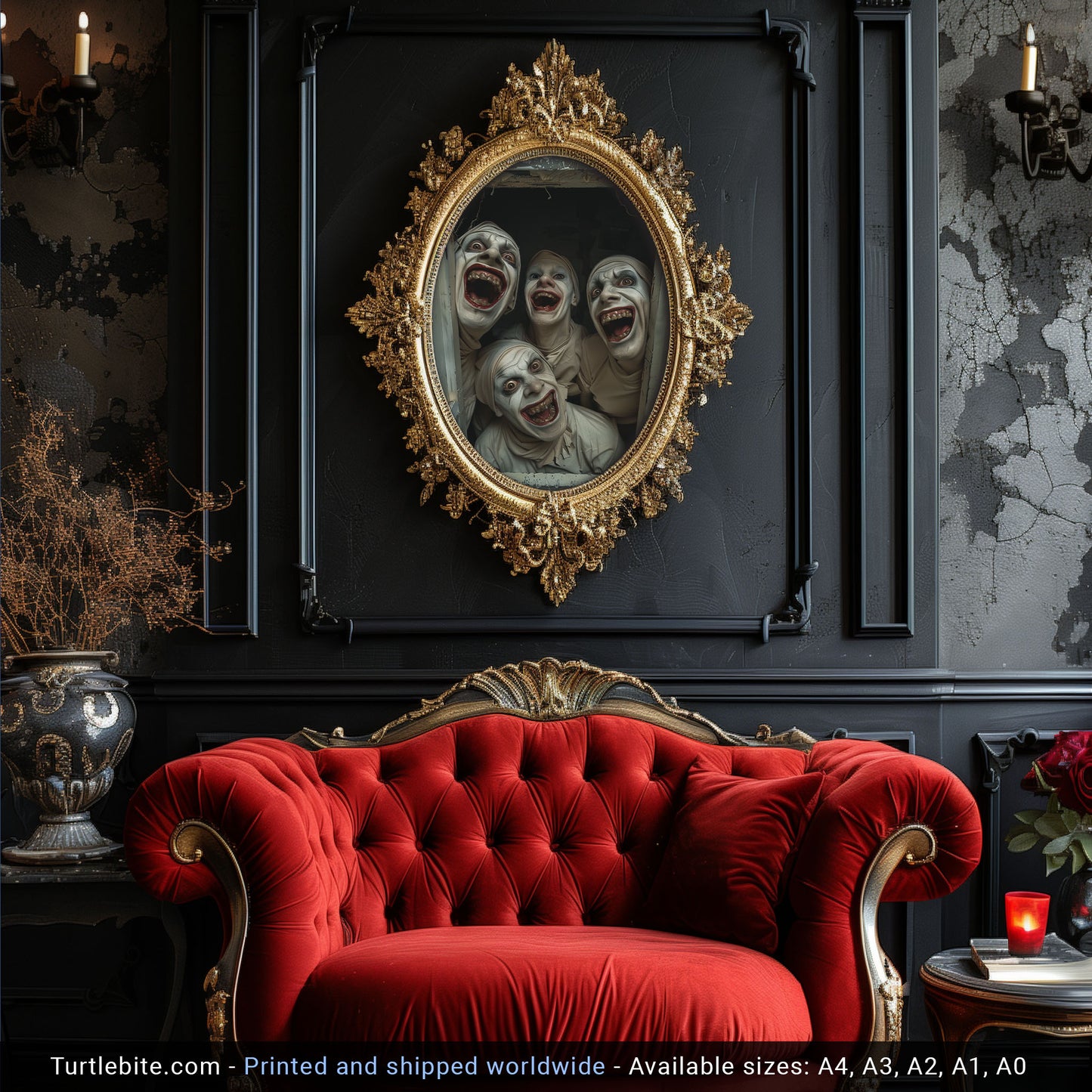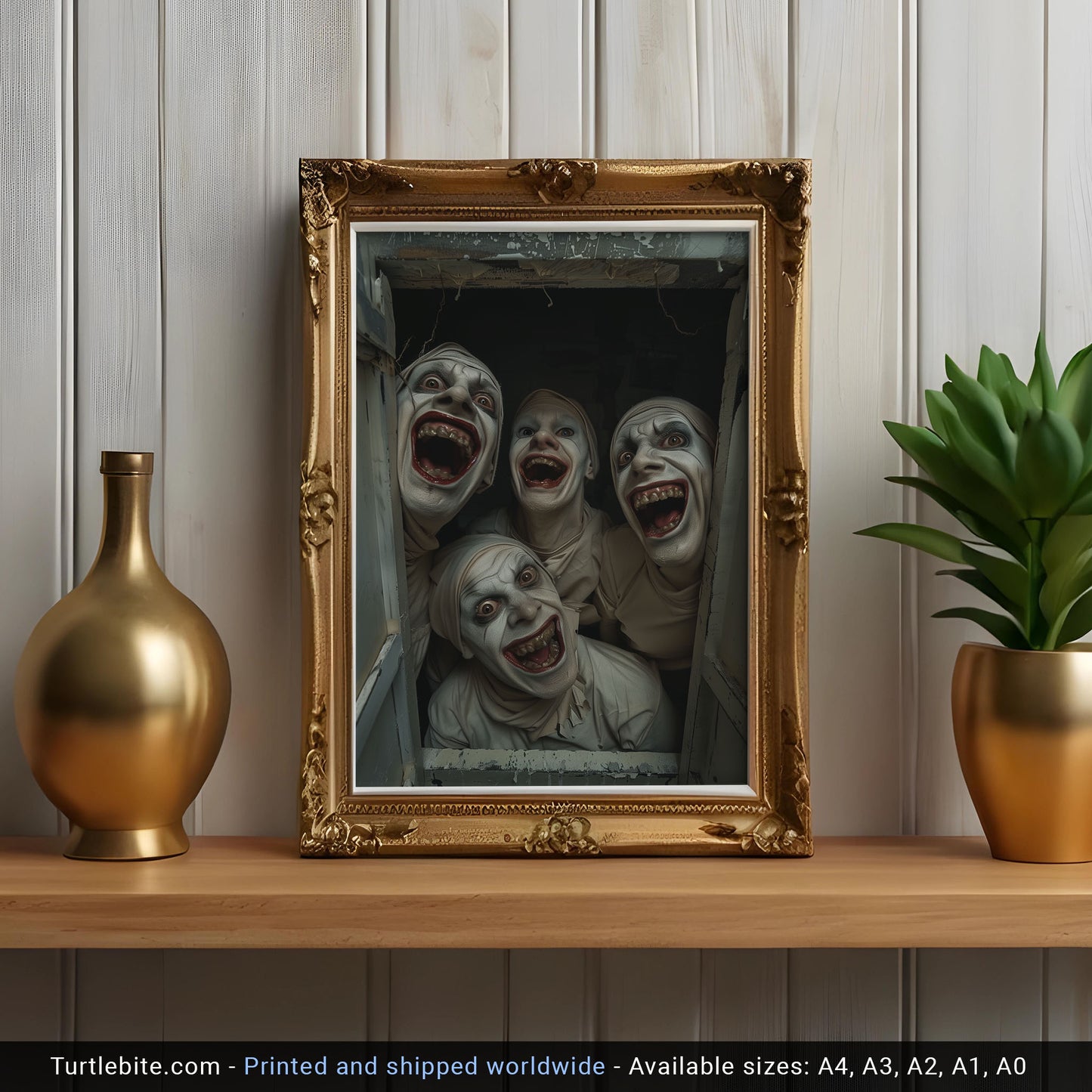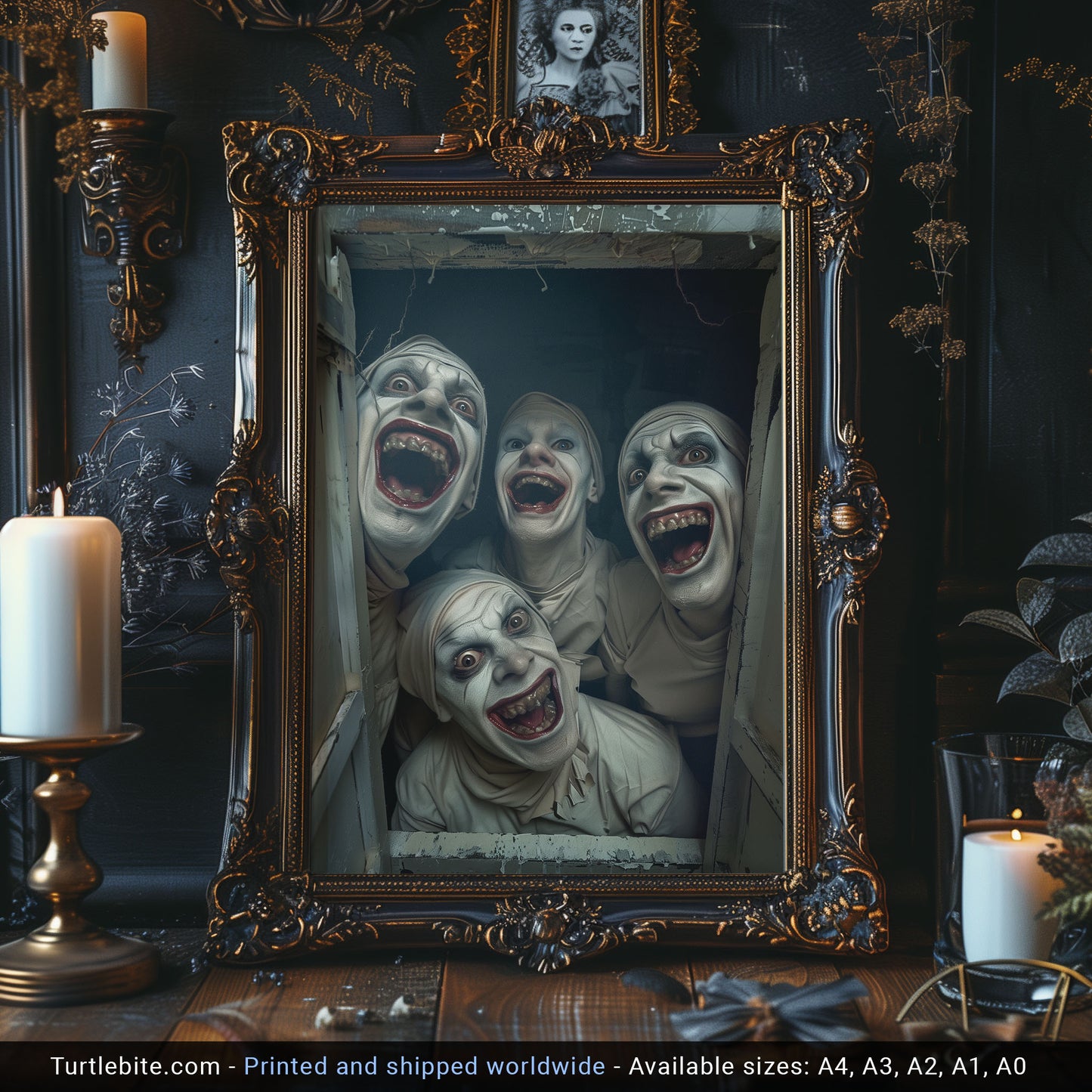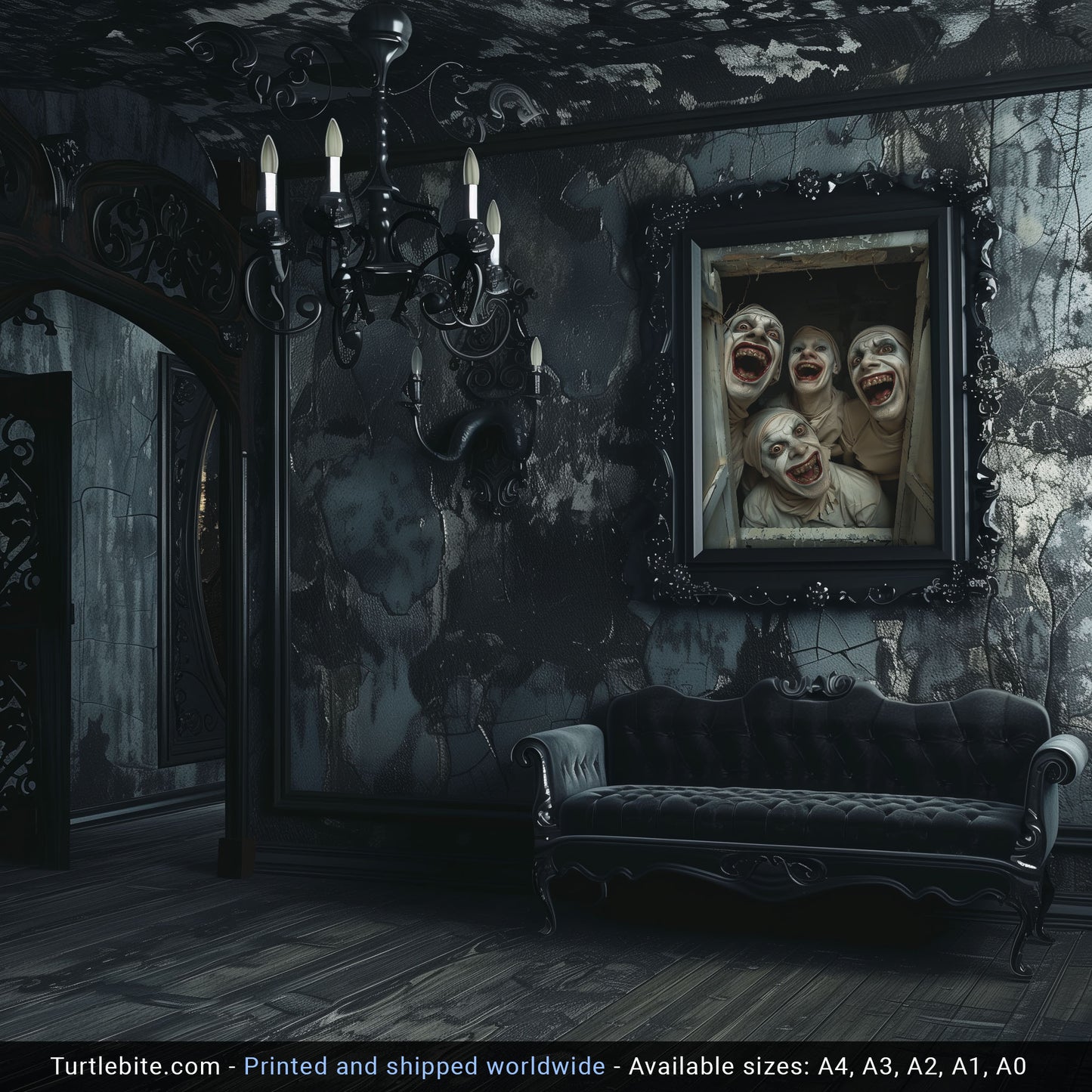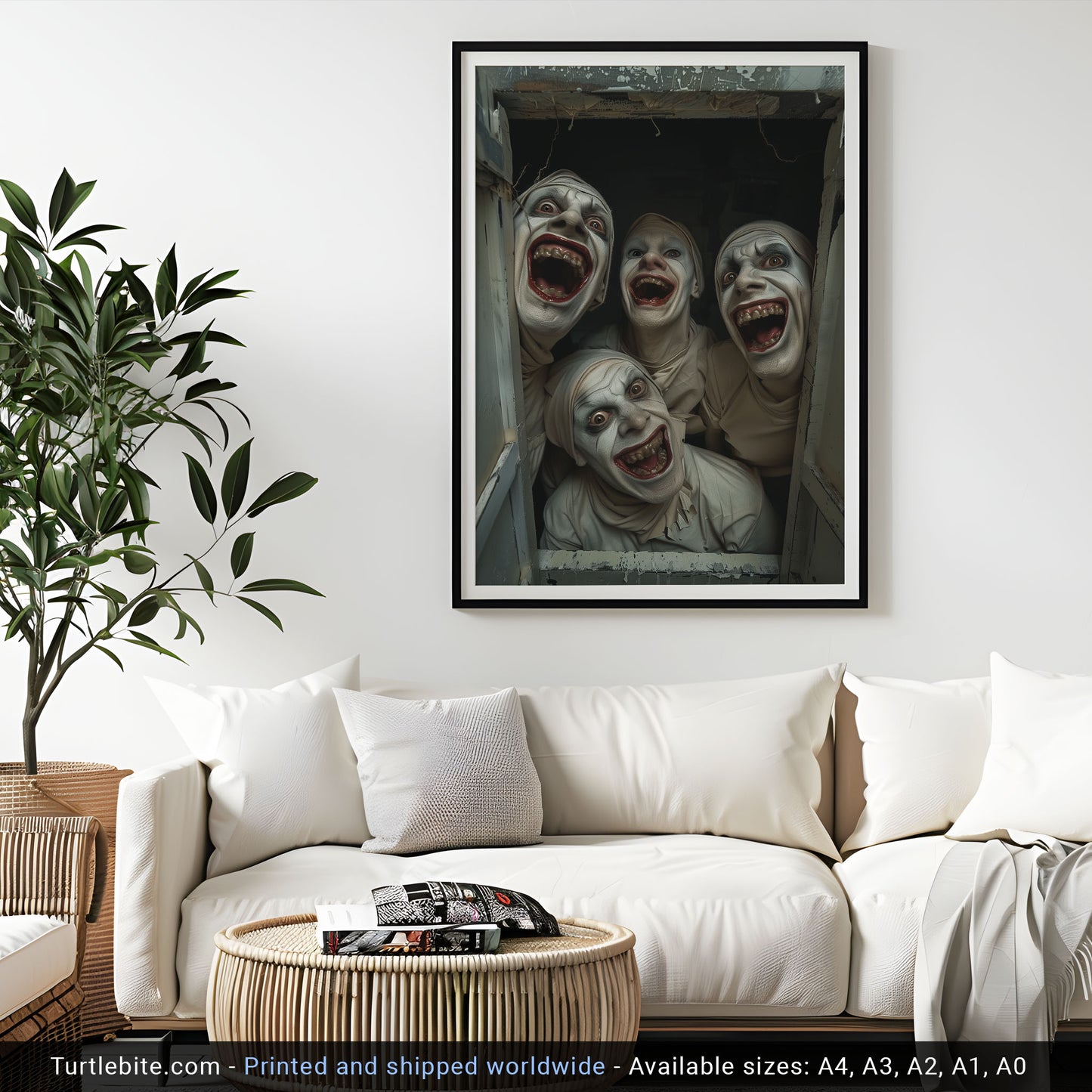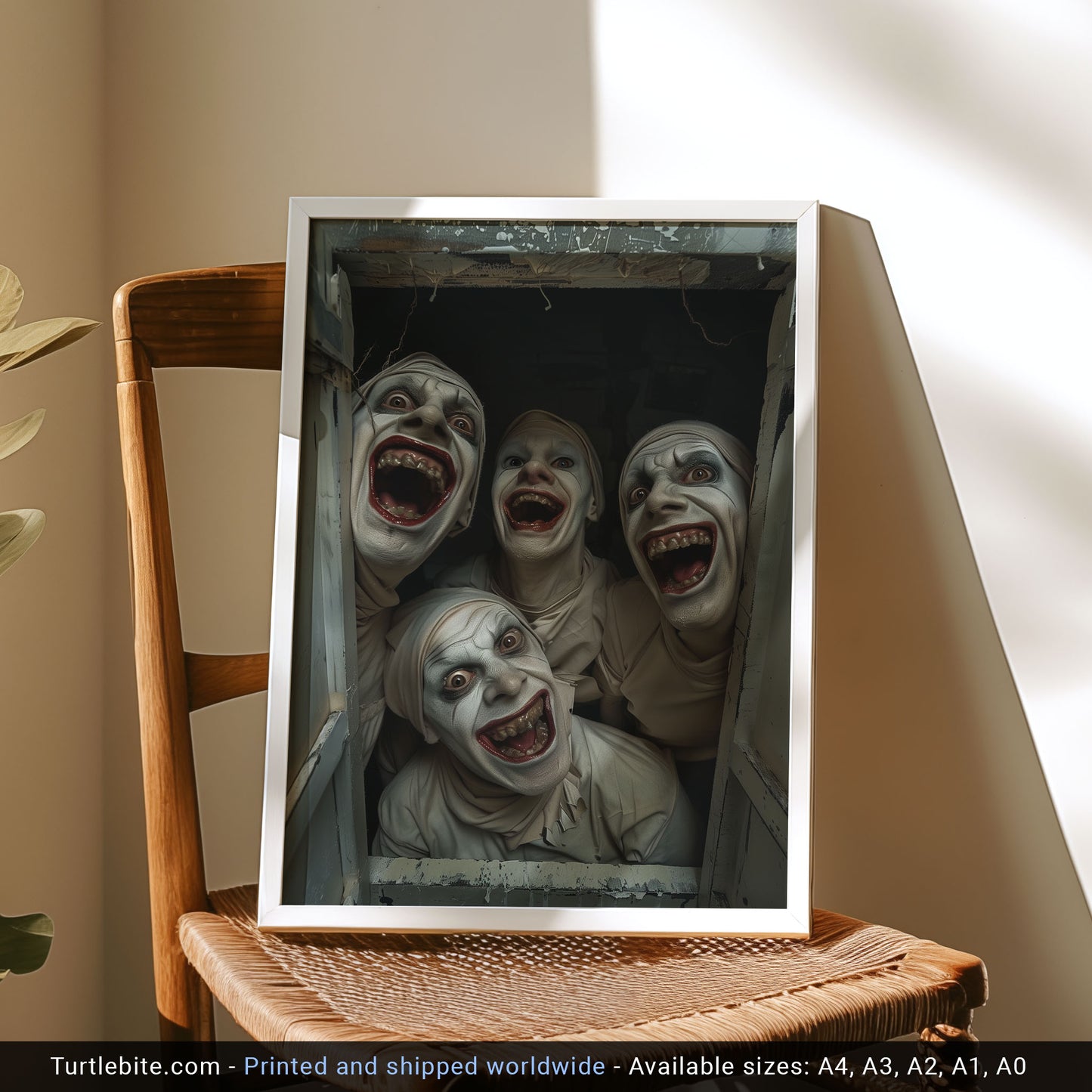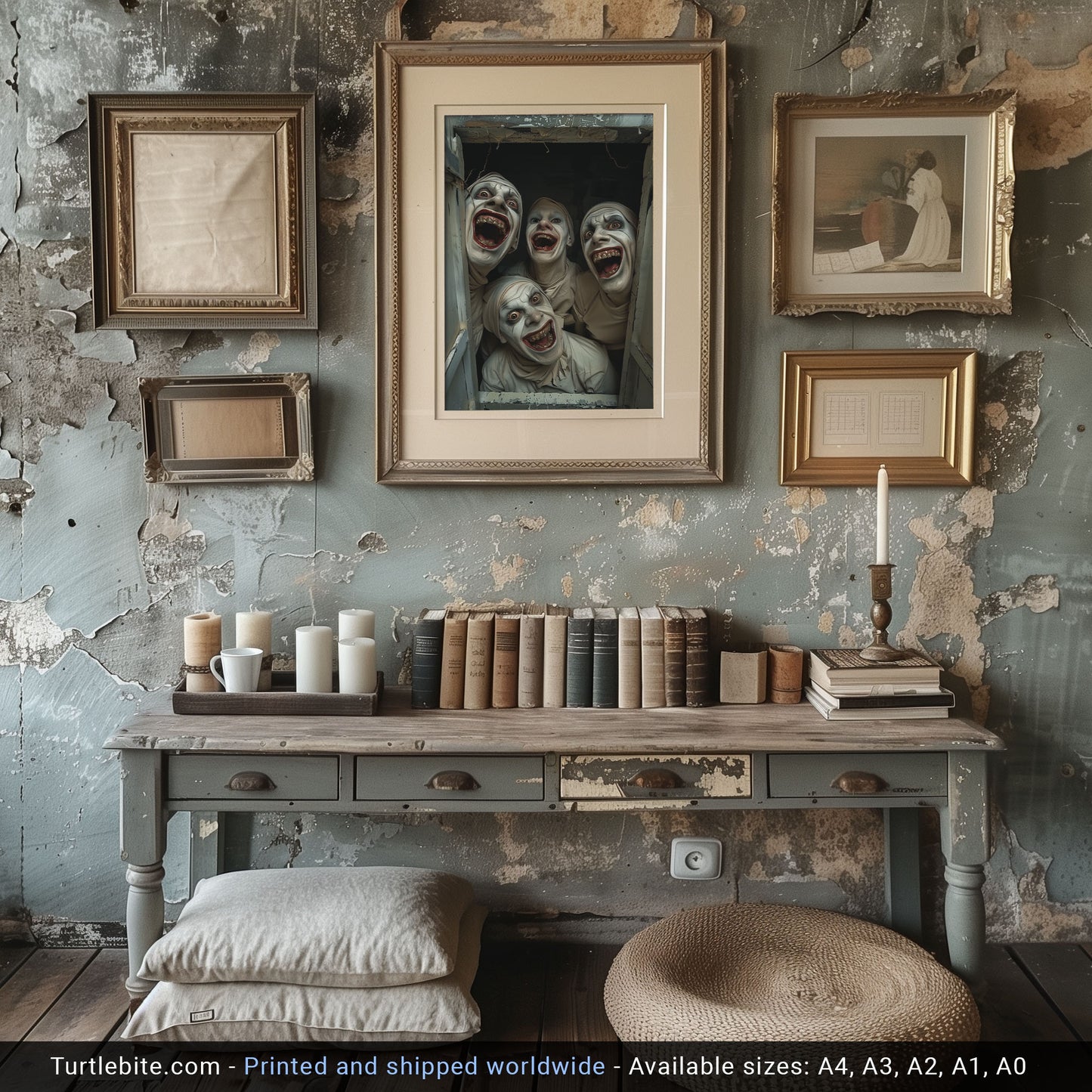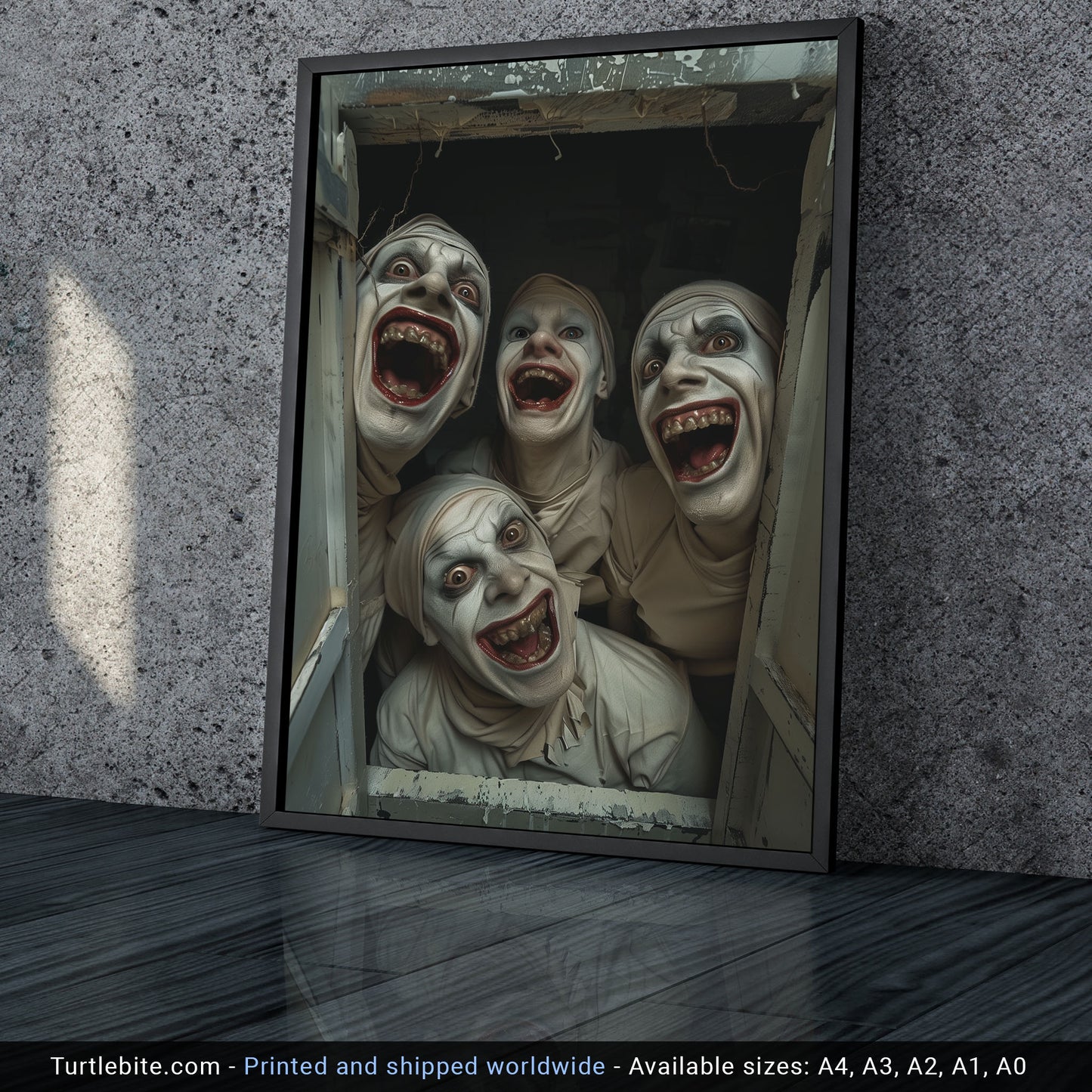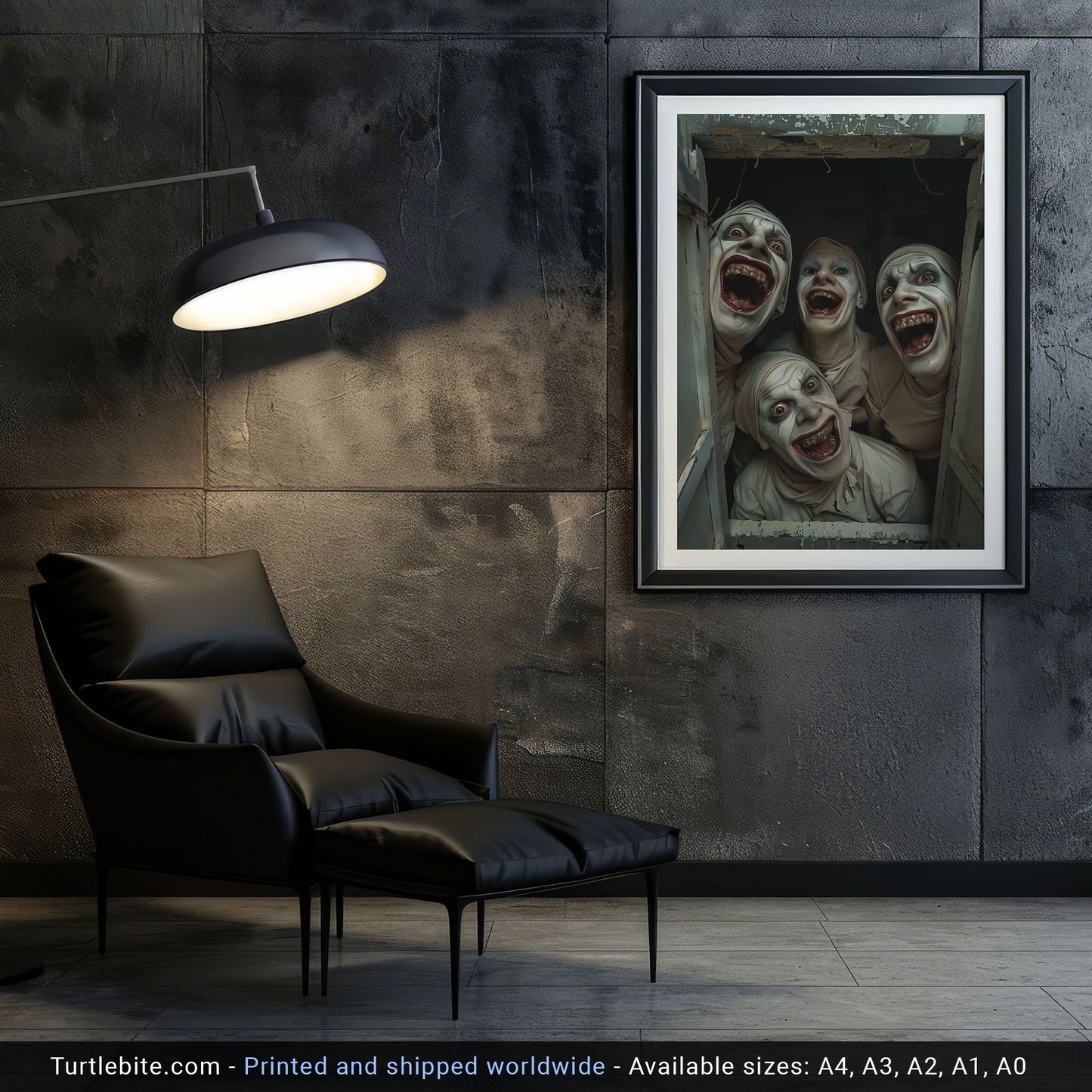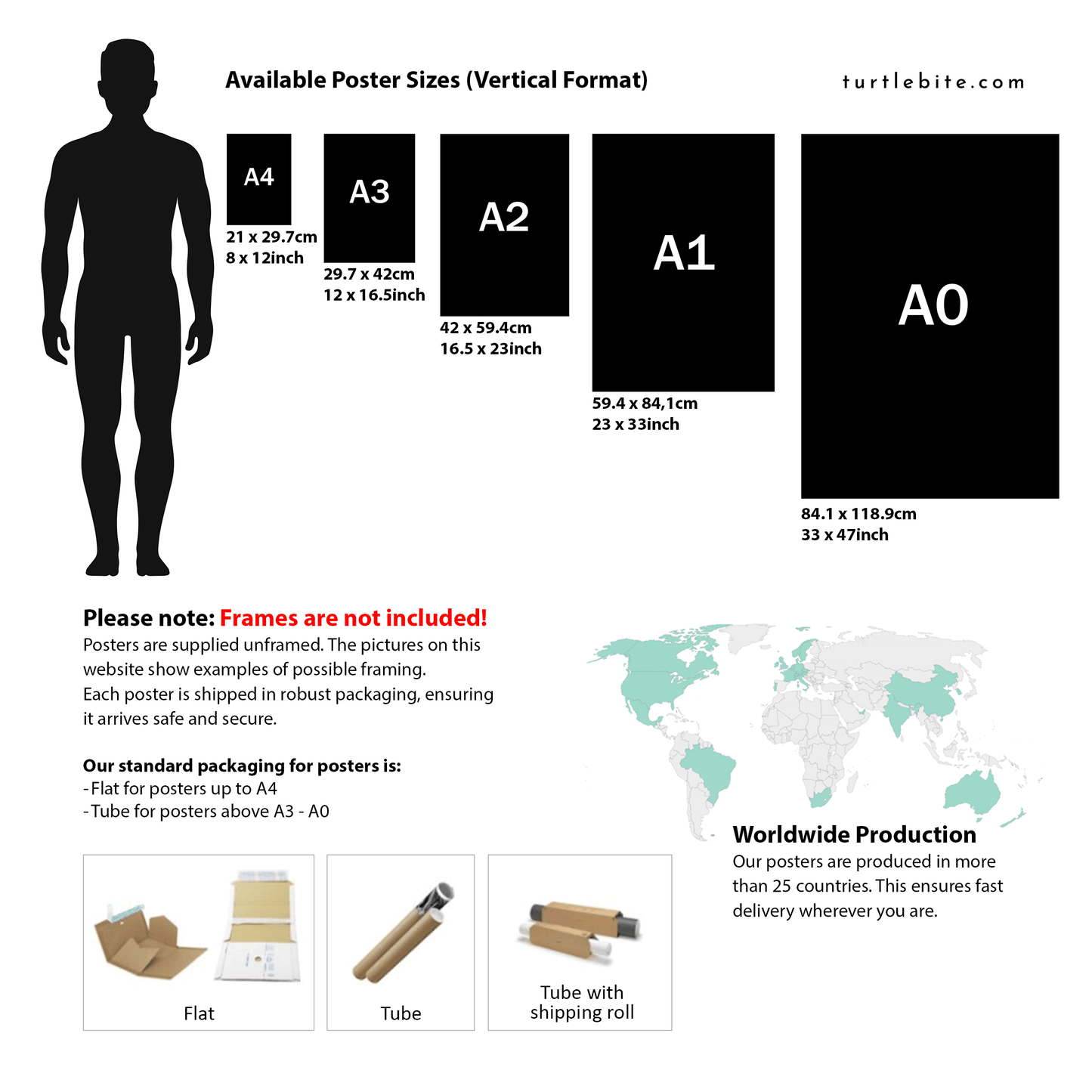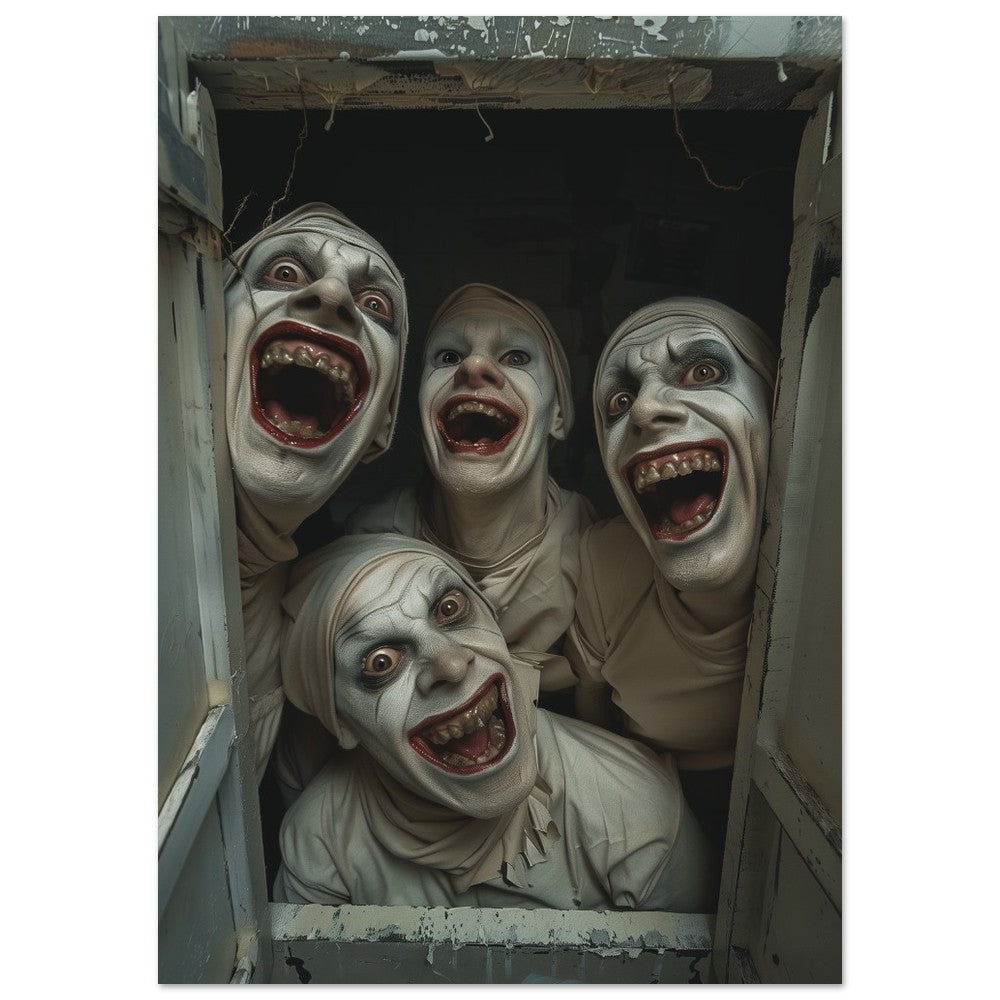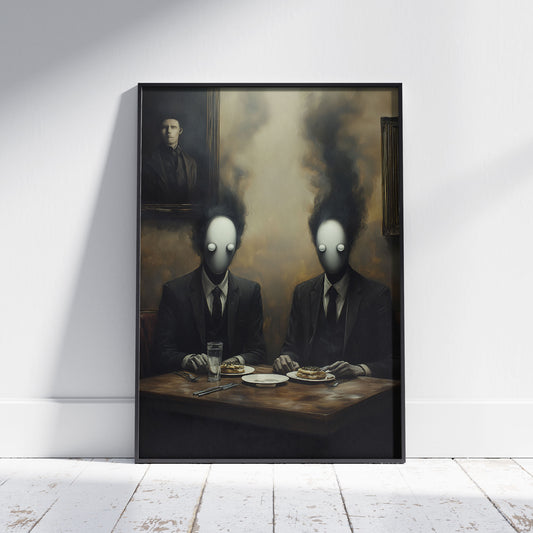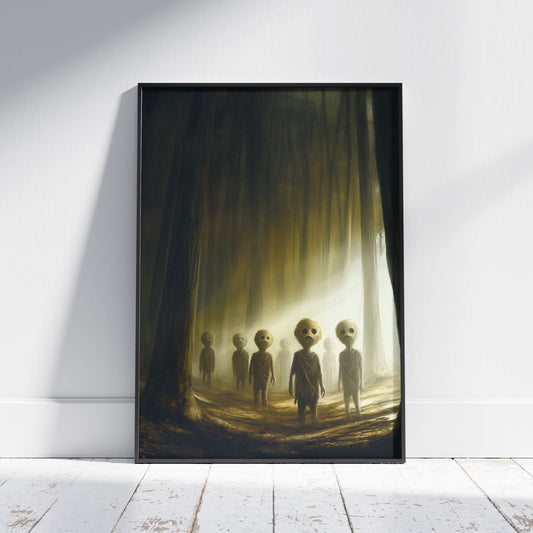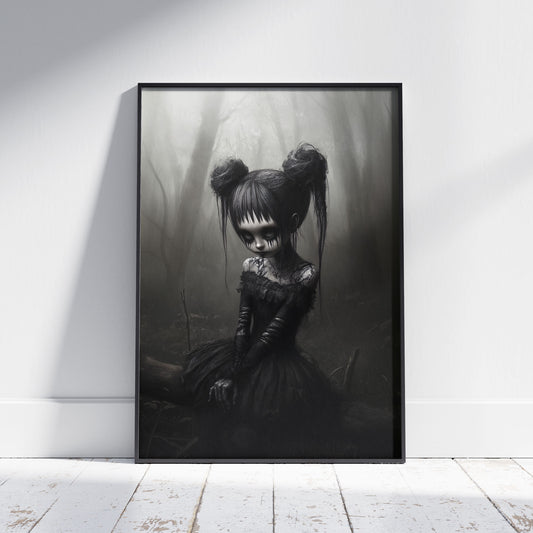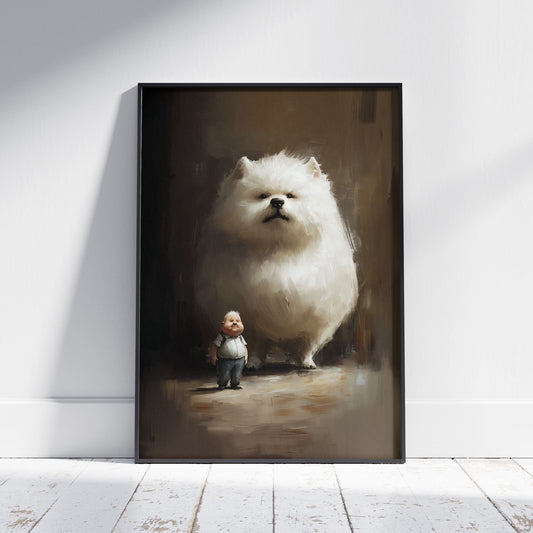
🎭 "Good Old Friends": A Visual Descent Into Surreal Horror
Share
A Peek Through the Abyss
There are images that evoke beauty, some that inspire thought—and then there are those that unsettle you to your core. “Good Old Friends” is one such image. With a darkly theatrical tone and grotesquely expressive faces, the photo presents a chaotic harmony between horror and performance art. This image doesn't just invite you in—it pulls you through a cracked window into a claustrophobic world of twisted delight.
At the core of this visual feast are four figures, clad in matching pale costumes and wrapped head coverings, staring up from a confined dark space. Their faces—clownish, disturbing, and exaggerated—offer a grotesque parody of human emotion. This image isn’t simply horror for the sake of horror; it’s a layered psychological experience waiting to be dissected.
Composition Breakdown
From a compositional standpoint, the image uses a tightly framed overhead angle. The viewer looks down through an old, paint-chipped window, possibly a trapdoor or attic hatch, enhancing the voyeuristic tension. This literal “downward gaze” makes the viewer feel like a god peering into madness—or worse, a victim discovering what should not be seen.
The four figures are tightly packed in the frame, their heads tilted upward, creating a symmetrical yet chaotic tableau. Each face is directed toward the camera, their expressions frozen in ecstatic horror. The framing and proximity exaggerate the figures’ features—wide, bloodshot eyes, gaping mouths, rotting teeth—trapping the viewer in a claustrophobic embrace of performance-gone-mad.
This cramped setup reinforces feelings of entrapment and collective hysteria. There’s no breathing room; every inch is filled with tension, every character is over-committed to the scene. The confined perspective plays with the human fear of being overwhelmed—by emotion, by others, by the grotesque.
Style & Aesthetic Influence
The aesthetic walks the thin line between horror and absurdist theatre. It draws influence from German Expressionism, the exaggerated mask work of commedia dell'arte, and the primal grotesque of modern horror tropes. Think The Cabinet of Dr. Caligari meets The Purge via a Cirque du Soleil nightmare.
The characters themselves resemble theatrical archetypes—the fool, the madman, the trickster—but their expressions have been pushed to a disturbing extreme. The makeup is mask-like, not merely applied but sculpted onto their skin. The white face paint stretches unnaturally across their faces, emphasizing every crack and crease. The exaggerated black eye shadow and blood-red lips recall mime performers or silent film stars—only here, they’ve decayed into something far more nightmarish.
The effect is both nostalgic and horrifying. We recognize the performance, the tradition behind it—but we also sense its collapse. These aren’t clowns or actors. They’re echoes of a show long ended, still grinning through rotten teeth.
Color Palette & Texture
Color is used sparingly but effectively. The palette centers around whites, grays, and muted fleshtones, disrupted by the garish crimson of lips and gums. The washed-out skin tone and white fabric lend a cadaverous feel to the entire scene.
Texture plays a huge role in the unsettling nature of the image. The fabric of the costumes is tightly stretched and almost clinical, like bandages. Combined with the stark white face paint, it evokes both hospital garb and traditional clown suits—adding a psychological confusion between care and madness, between healing and decay.
The cracked paint of the surrounding window frame adds to the tactile discomfort. It’s not just the figures who are decaying—the world itself feels old, forgotten, and corrupted. This world is dying, but no one told its residents.
Lighting and Shadow Play
Lighting is another masterstroke. The primary source appears to be a stark overhead light, creating deep shadows in the eye sockets, cheekbones, and beneath the chin. This lighting exaggerates facial features, casting unsettling contours and bringing out the sunken, corpse-like hollows in their faces.
What’s interesting is how the light both reveals and distorts. The figures are fully illuminated, but their exaggerated makeup and elastic expressions bend the light in surreal ways. Shadows pool in the creases of smiles, turning joy into menace.
The contrast between the harsh interior lighting and the deeper blackness behind them creates a haunting vignette. The darkness becomes a kind of character itself—silent, waiting, perhaps crawling forward behind these figures. There’s no safe space for the eye to rest. Every pocket of light leads deeper into something unnerving.
Emotional Tone & Symbolism
The dominant emotion this image invokes is a visceral cocktail of amusement and fear. The title “Good Old Friends” adds a sinister irony. These characters are too happy to see you. Their grins are wide, forced, painful. Their eyes are desperate. It’s unclear whether they’re inviting you in or pleading to be let out.
Symbolically, the image touches on the fear of the familiar turned strange. These aren’t monsters. They’re people, or were. Their happiness has been cranked beyond reason. They represent the masks we wear—clowns, performers, people-pleasers—pushed to their tragic limit.
This image may also critique performance itself. The idea that in constantly performing joy, madness creeps in. Are these failed actors? Forgotten friends? Delusions? Their environment—trapped, peeking out—suggests isolation and abandonment.
Even their decay tells a story. Rotting teeth symbolize broken communication. Their mouths are open, but do they speak? Or only scream? Their expressions are permanently plastered on, suggesting that these smiles may have once been real—but have since turned to madness.
Background and Setting
The setting is minimal but rich in implication. The figures are inside a small, box-like space—perhaps a cellar or attic. The chipped, peeling paint and dilapidated wood suggest neglect, decay, and abandonment. It’s a forgotten corner of the world—and yet these figures remain.
The darkness behind them is total. There are no props, no sets, no visible walls. This void isolates the figures even further, making them pop out in stark relief against their shadowy prison. The world around them doesn’t matter—they are the whole story.
The angle of the camera, peering in through the trapdoor, creates the illusion that the viewer has just stumbled upon them. This “discovery” moment—like opening a cursed box—adds a cinematic flair of horror and suspense.
Theatrical and Psychological Layers
The theatrical tone isn’t just surface-level—it digs deep into performance psychology. The exaggerated smiles, the perfectly aligned body language, and the dramatic lighting all speak to a world where everything is staged—but to what end?
This image can be read as a metaphor for internal repression. The figures represent facets of the self—the grinning mask we wear for the world, hiding decay beneath. In keeping up appearances, we slowly lose grip on reality. Madness becomes a performance we no longer know how to end.
From a Jungian lens, the figures could be archetypal shadows—the collective unconscious given face and costume. The darkness they emerge from is the subconscious, and the viewer’s gaze is the moment of confrontation.
The image suggests that horror lies not in monsters, but in too much humanity. Too much joy. Too much performance. The act never ends, and the curtain never falls.
Final Thoughts
“Good Old Friends” is a visual masterclass in horror surrealism, pushing theatrical tropes and emotional discomfort into bold new territory. From the tight framing and grotesque smiles to the existential implications of performance and decay, every detail works toward a single purpose: to leave a mark.
Whether viewed as a theatrical satire, psychological metaphor, or just a nightmarish vision, the image captivates and unsettles. It reminds us that horror doesn’t always come with claws—it can come with a grin.

